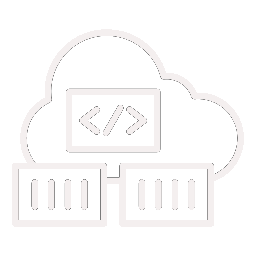
Introduction to Cloud-based TOS
The shift towards digital solutions in managing terminal operations is epitomized by the adoption of Cloud-Based Systems for terminal operations. This technology serves as the backbone for modernizing the flow of goods through ports, providing an agile platform for the dynamic needs of global trade.
Evolution of Management Systems in Terminals
The transition from traditional management systems to digitalized terminal operations reflects a broader shift towards efficiency and scalability. Early systems were confined by their physical infrastructure, while today’s cloud-based alternatives excel in providing flexibility and instantaneous access to critical data.
Core Advantages of Modern Terminal Systems
Modern Terminal Operating Systems deliver several essential advantages, including streamlined yard orchestration and enhanced cargo monitoring, which significantly elevate operational throughput. They offer extensible frameworks that can effortlessly scale, supporting the evolving requirements of port operations.
Strategic Value of Cloud Adoption in Logistics
Embracing cloud technology in logistics operations unlocks significant strategic benefits, such as reduced operational expenses and informed decision-making capabilities. These systems foster improvements in terminal operations and broaden supply chain transparency, markedly diminishing the ecological footprint of logistic activities.
environment.
Example Comparative Table: Cloud-Based TOS vs. Traditional TOS
| Feature | Traditional TOS | Cloud-Based TOS |
|---|---|---|
| Deployment | On-premise, requiring significant infrastructure investment | Cloud deployment, minimizing initial costs |
| Scalability | Limited by physical infrastructure | Highly scalable, adjusting to demand in real-time |
| Data Access | Restricted to on-site access | Available anywhere, enhancing remote management |
| Upgrades | Manual and disruptive | Seamless and automatic, with minimal downtime |
| Security | Dependent on local measures | Enhanced through cloud providers’ protocols |
Leveraging Cloud Technology for Terminal Operations
Implementing cloud technology in terminal operations facilitates a streamlined approach to managing logistics. This system provides instant access to operational data and integrates seamlessly with existing logistic frameworks, promoting a dynamic operational model adaptable to fluctuating demands.
Core Components of Modern Terminal Systems
This innovative system encompasses essential elements designed to optimize terminal activities. It includes sophisticated software for terminal management, enhancing cargo handling and storage efficiencies. Automation tools in freight management are embedded within the system, ensuring secure and efficient terminal procedures.
Enhancing Container Tracking with Advanced Systems
A significant advantage of adopting this system is the improvement in tracking containers. It enables stakeholders to monitor the movement of cargo accurately, promoting a transparent supply chain. This functionality is critical for efficient logistic management, offering stakeholders peace of mind through enhanced tracking capabilities.
Navigating the Shift to Advanced Terminal Systems
Transitioning to an advanced terminal system may present certain hurdles, including concerns over data security and the complexity of integrating new technology. However, with robust planning and the right partnerships, these challenges can be effectively addressed, ensuring a smooth transition to more efficient operations.
Strategies for Overcoming Implementation Hurdles
To effectively mitigate these hurdles, adopting comprehensive security measures and collaborating with reputable technology providers are essential steps. Tailored training initiatives for staff and detailed planning for data integration are also crucial for a successful adoption of the system.
Container Tracking: Before and After Cloud-Based TOS:
| Feature | Before | After |
|---|---|---|
| Visibility | Limited | Enhanced |
| Accuracy | Approximate | Precise |
| Real-time Updates | Uncommon | Standard |
Anticipating the Evolution of Cloud Technologies in Terminals
Looking ahead, terminal operations are set to be further transformed by emerging cloud innovations, with artificial intelligence (AI) and predictive analytics playing key roles in streamlining decision-making processes. A greener approach is also anticipated, with sustainability becoming a core focus.
Selecting a Provider for Cloud Solutions in Logistics
The choice of a provider for cloud solutions is critical. Key aspects include assessing the reliability of vendors, the comprehensiveness of technical support, and the adaptability of the system to evolving needs. The ideal provider offers customizable solutions that cater specifically to the nuanced requirements of logistics operations.
Successful Deployment of Cloud Technologies
For a smooth integration of cloud technologies, adherence to best practices is essential. This includes detailed planning for deployment, fostering collaboration among all stakeholders, and a commitment to ongoing refinement and risk assessment to ensure the system remains responsive to operational needs.
Glossary: Understanding Key Cloud-Based Terms
A glossary segment clarifies essential terms related to cloud-based systems, such as “Software as a Service” (SaaS), scalability, and real-time data processing. This helps demystify the technology for all readers, providing a clearer understanding of its impact on supply chain operations.
Implementation Challenges: Traditional vs. Cloud-Based TOS:
| Challenge | Traditional Systems | Cloud-Based TOS |
|---|---|---|
| Integration Complexity | High | Lower |
| Upfront Investment | Significant | Minimal |
| Flexibility | Limited | Extensive |
Take it from the sources: https://terminaloperatingsystem.com/what-are-cloud-terminal-operating-systems-and-how-they-improve-efficiency/

Leave a Reply